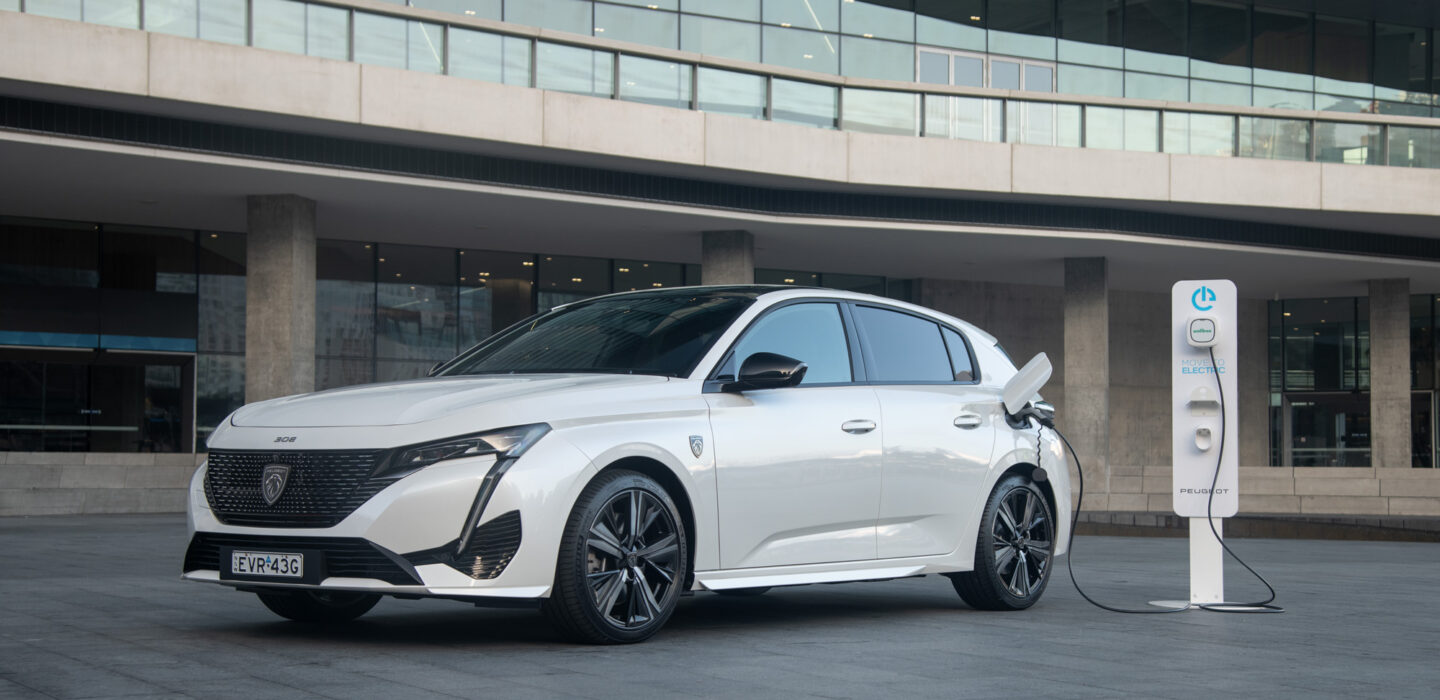Plug-In Hybrid performance boosts the Australian PEUGEOT 308 range

PEUGEOT Australia has welcomed the new 308 GT Sport Hatch Plug-In Hybrid to the Australian PEUGEOT 308 range, offering local customers impressive performance and plug-in hybrid benefits. The 308 GT Sport Hatch Plug-In Hybrid will join the GT Hatch and GT Premium Hatch and Wagon models that launched locally in November 2022.
PEUGEOT 308 GT Sport Hatch Plug-In Hybrid matches a 132 kilowatt, 1.6-litre, PureTech turbocharged four-cylinder petrol engine and 81-kilowatt electric motor, the pair combining to deliver 165 kilowatts of power and 360 Newton metres of torque.
PEUGEOT 308 GT Sport Hatch Plug-In Hybrid uses a derivative of the EAT8, the electric-Efficient Automatic Transmission (e-EAT8) which replaces the torque convertor with a clutch pack. Like the rest of the local range, it is front-wheel-drive.
With a WLTP test range of 60 kilometres* of electric-only driving, the plug-in hybrid powertrain provides an impressive 1.3 litres/100km average fuel economy on the combined cycle**.
Kate Gillis, Managing Director Peugeot Australia, said: “Following from the launch of the 308 GT and GT Premium variants in November 2022, the addition of the 308 GT Sport Hatch Plug-In Hybrid further strengthens the premium appeal of our local 308 range by broadening the compelling and distinctive offering with a plug-in hybrid powertrain.
“Offering added power and electric motor performance, the launch of the GT Sport Hatch Plug-In Hybrid allows us to enter into the electrified small car segment for the first time in Australia as we push forward on our electrification journey.
“2023 will be momentous for our local electrification plans. The 308 GT Sport Hatch Plug-In Hybrid marks the third electrified PEUGEOT to launch in Australia with our electrified offering expanding further with the 508 Sportswagon Plug-In Hybrid, the all-electric e-Partner small van and e-2008 small SUV following later this year.” Ms Gillis added.
For more information on the Peugeot 308 PHEV, click here.
*Figure based on WLTP (Worldwide Harmonised Light Vehicle Test Procedure) static laboratory combined average city and highway cycle test, which measure, energy consumption, range and emissions in passenger vehicles, figures stated for the purposes of comparison amongst vehicles tested to the same technical procedures only. Actual real world range results will vary depending on a combination of factors including but not limited to load, driving style, type of journey, vehicle configuration, battery age and condition, use of vehicle features (such as heating and air conditioning), as well as operating, environmental and climate conditions.
**The published consumption (l/100km and Wh/km), emissions (g/km) and kilometre (km) range figures are determined in accordance to ADR 81/02 derived from WLTP (Worldwide Harmonised Light Vehicles Test Procedure). Actual figures will vary as they are dependent on many factors, including without limitation: individual driving style, road and traffic conditions, environmental conditions, fuel quality, a vehicle’s or battery’s condition, load and use. Extra features and accessories (eg: equipment, wheels or tyres used etc.) can change relevant vehicle parameters such as weight, rolling resistance and aerodynamics and can also affect the consumption, emission, range and performance values of a vehicle. Generally, consumption, emissions, kilometre range and charging times will vary from the published figures in real world Australian driving and charging conditions.